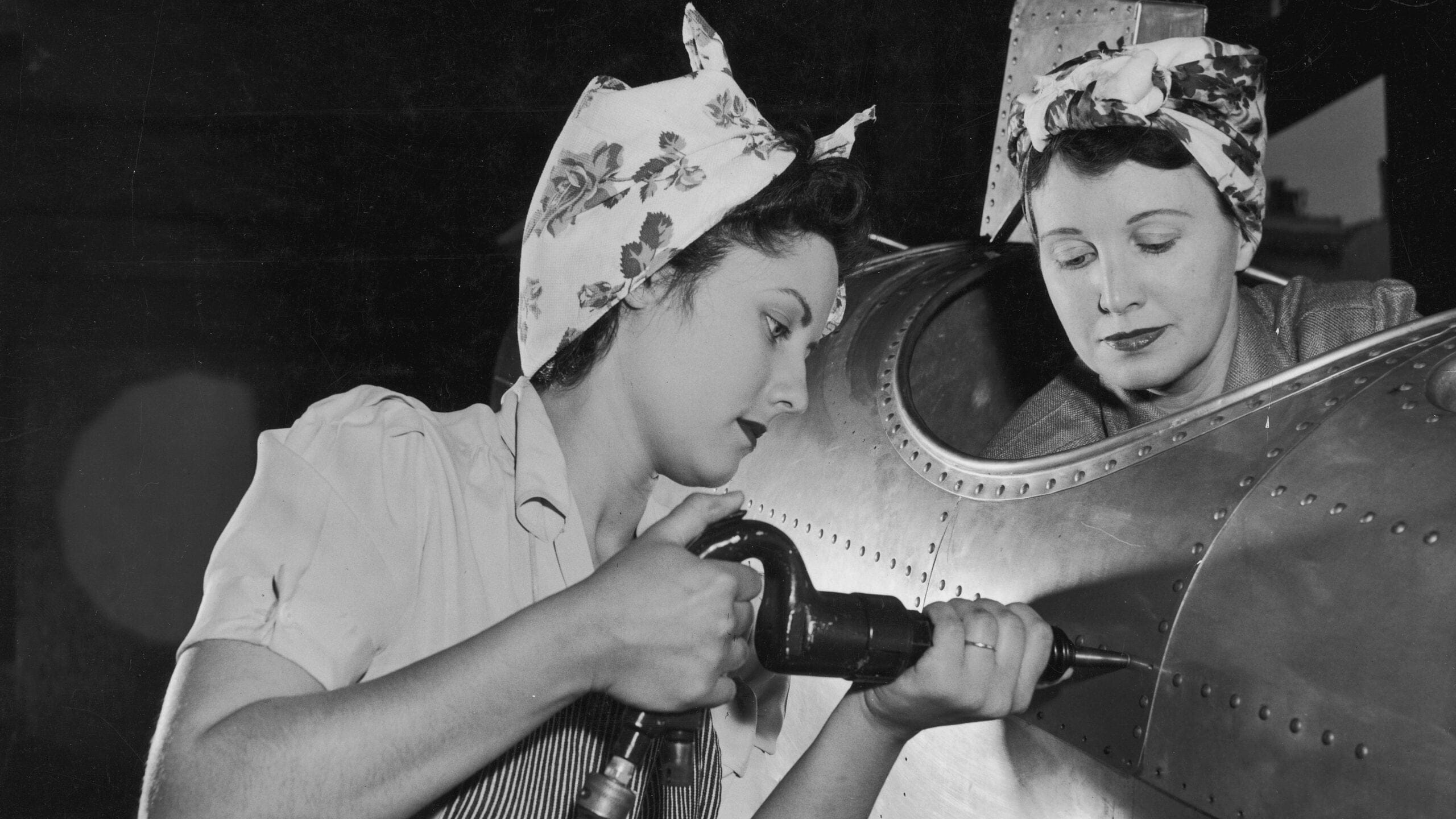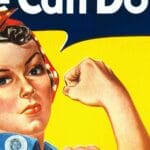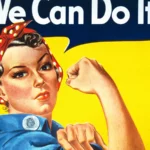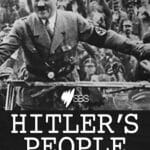Dive into the captivating history of “Rosie the Riveter and Beyond,” where women ignited a revolution in industry during World War II. From the iconic Rosie image to the unsung heroines on factory floors, we’ll uncover the untold stories of women whose unwavering determination and resilience proved pivotal to the war effort. Prepare to be inspired by their indomitable spirit and the profound impact they had on the course of history.
Women in World War II Industry
When the storm of World War II erupted, it dramatically reshaped the American landscape, and perhaps no change was as unexpected as the surge of women into the workforce. With millions of men shipped overseas to fight, the daunting task of keeping the country running, the weapons forged, and the supplies flowing fell upon capable shoulders – the women of America.
This wasn’t merely a subtle shift, but a seismic change that redefined the role of women in society. Picture this: the heart of 1940s America, factories humming with activity, shipyards bustling with construction, and amidst the controlled chaos, a new breed of worker emerges – women, millions strong, stepping into roles traditionally held by men. The statistics are staggering: an estimated six million women joined the workforce, their contributions weaving the very fabric of the nation’s war effort.
The iconic image of Rosie the Riveter, muscles flexed, bandana on her head, perfectly encapsulates the strength and determination of women during the war. But their story is far richer and more diverse than a single image could ever convey.
Women weren’t just working in factories; they were the backbone of industries they were once excluded from. They kept the trains and streetcars running, built ships with unwavering precision, and even took on dangerous jobs in munitions plants, their courage unwavering in the face of risk. They learned to operate complex machinery, weld metal with expertise, and manage teams with efficiency, proving their competence in fields previously considered exclusive to men.
The impact of their work cannot be overstated. These women weren’t just filling vacant positions; they were vital to the war effort, their efforts inextricably linked to the Allied victory. Their tireless dedication in factories across the country built the arsenal of democracy that helped turn the tide of war. It’s difficult to imagine the outcome without their contribution.
However, the significance of their contribution extends far beyond the realm of winning a war; it was about shattering deeply ingrained societal perceptions. The war challenged the long-held belief that women were simply not suited for certain types of work. Their unwavering determination and undeniable capability shattered stereotypes and forced society to re-evaluate the perceived limitations of women in the workforce.
It’s crucial to acknowledge that the path was not paved with ease. Women encountered hurdles, prejudices, and inequalities that they had to confront head-on. Their wages remained stubbornly lower than their male counterparts, and many faced skepticism and discrimination within the industries they helped shape.
When the war finally ended, a wave of societal pressure pushed many women back into their domestic roles, making way for the returning soldiers. The progress made was not always permanent, and the fight for equal opportunities was far from over.
Despite these setbacks, something profound had shifted within the societal consciousness. The war years had brought about a cultural shift, planting the seeds for the women’s rights movements that would blossom in the decades to come. Women had tasted economic independence, proven their capabilities beyond a shadow of a doubt, and glimpsed a future where their contributions were valued and their voices heard.
The story of women in World War II industry is a testament to their resilience, adaptability, and unwavering spirit in the face of adversity. It’s a story brimming with complexities and contradictions, triumphs, and setbacks, a narrative that continues to fascinate historians and researchers to this day. How did this mass mobilization impact women’s lives in the long term? How did race and class intersect with gender during these transformative years? These are questions that scholars are still grappling with, and the answers continue to shape our understanding of this pivotal period in American history.
What roles did women play in industry during World War II?
With millions of men deployed overseas, the question arose: who would keep the home fires burning while simultaneously building the planes and ships needed for victory? The answer, resoundingly, was women. While Rosie the Riveter stands as an enduring symbol of their effort, it’s crucial to recognize the sheer breadth of their contributions. Women in World War II weren’t just filling in; they were stepping up into roles they were told they weren’t suited for and, often, excelling.
The shift was dramatic: from being primarily homemakers, women were now operating heavy machinery, navigating the bustling environment of shipyards, and even meticulously assembling munitions – all while many were still managing households and families. The scale of industrial work women took on was staggering, completely upending the prevailing notion of what women were “capable” of.
But their impact wasn’t limited to the factory floor. During this period of heightened national anxiety, danger wasn’t confined to distant battlefields. Women became pillars of their communities, serving as air-raid wardens, always ready to guide their neighbors to safety. They served as fire officers, drivers, civil service employees – demonstrating that whatever needed to be done, women were more than capable of doing it.
This transcended simply filling jobs; it was about fundamentally changing perceptions. Scholars suggest that World War II had a profound impact on gender roles. By taking on these traditionally masculine roles, women challenged long-held societal norms, forcing a reassessment of their place in the workforce. While it wasn’t always easy and things didn’t magically change overnight when the war ended, the seeds of change had been sown, paving the way for greater female participation in the workforce and society in the years to come.
It’s worth pondering: without the millions of women who stepped up, the outcome of the war might have looked very different. Their contributions, both on the factory floor and on the home front, were absolutely essential to the Allied victory. And, perhaps just as importantly, their wartime experiences paved the way for future generations of women to pursue opportunities that their mothers and grandmothers could have only dreamed of.
How many women were employed in the war industry during World War II?
Picking up from where we left off, let’s delve into the numbers, which paint a compelling picture of women’s contributions to the war effort. While it’s difficult to say exactly how many women traded their aprons for overalls during this period, the number was undeniably huge. We’re talking millions! Imagine the scene: over six million women stepping into shipyards and factories, places where they were not always welcome before.
While the image of Rosie the Riveter is powerful and inspiring, it only begins to scratch the surface of the story. Women were everywhere – building planes with meticulous care, making tanks that would turn the tide of war, sewing uniforms that clothed their fighting sons and brothers – you name it, they did it!
Of course, the journey wasn’t without its challenges. Women often found themselves subject to lower pay than men doing the same jobs, a stark illustration of the inequalities that persisted. Sadly, discrimination and harassment were all too common, casting a shadow over their achievements. Yet, these women persevered, demonstrating incredible resilience. They showed everyone what they were made of, proving they were just as tough, skilled, and capable as any man.
Here’s the truly remarkable thing: by stepping up and taking on these jobs, women didn’t just contribute to winning a war; they fundamentally changed the conversation about what women could achieve. After the war, while things weren’t perfect, a shift had occurred. Women were no longer willing to settle for solely being housewives. They had tasted independence, the pride of earning their own paychecks, and they yearned for more. More education, more opportunities, and more say in their own lives had become a burning desire.
It’s inspiring to consider the ripple effect of their actions. Those women who stepped up during the war, weren’t just building bombshells; they were breaking down walls of prejudice and inequality. They paved the way for generations of women to come, proving that women are capable of incredible things when they work together and fight for what they believe in. Their stories are a testament to the strength and resilience of women, and they continue to inspire us today.
What industry saw the greatest increase in female workers in World War 2?
While women stepped up across various industries during World War II, taking on jobs they were never really expected to do before, it was the high-flying world of aviation that saw the most dramatic transformation.
Before the war, the sight of a woman working on airplanes was a rarity; they made up a minuscule 1% of the workforce. By 1943, the picture had changed entirely. An incredible 65% of all aviation workers were women! Imagine that – almost two out of every three people building planes, making parts, and keeping those factories humming were women.
This dramatic shift, with over 310,000 women across the country dedicating themselves to this essential work, challenged the very notion of what women were capable of. They proved, with every rivet hammered and every wing assembled, that they were just as skilled and dedicated as any man, building the aircraft that helped secure Allied victory. Their contributions transformed the aviation industry and redefined the role of women in the workplace forever. These “Rosie the Riveters” of the sky paved the way for greater opportunities for women in the years to come.
What kind of factories did women work in during WWII?
It’s fascinating to see the sheer variety of factories where women worked during the war. It wasn’t just one or two industries that saw a transformation; it was a complete overhaul of the workforce.
As we’ve already seen, aviation became almost synonymous with women’s work during this time. Building airplanes, once a male-dominated field, was now carried out largely by women. Shipbuilding also saw a massive influx of female workers, taking on jobs that were previously considered exclusively “men’s work.” These women were welding and riveting alongside their male counterparts, challenging and ultimately dismantling those outdated ideas about what women could and couldn’t do.
Their contributions weren’t limited to heavy industries. Munitions factories, dangerous but vital to the war effort, saw women working tirelessly on the front lines of production, making bullets and bombs. In textile factories, they were busy sewing uniforms and parachutes with precision and care, the pressure immense as they knew lives depended on their work. And, of course, let’s not forget the food processing plants, where women ensured that the troops had the sustenance they needed to fight and win.
The sheer variety of jobs women were doing is remarkable. Historians are still uncovering new details about their contributions, and the subject continues to be an area of active research. One area of debate is just how much the wartime experience shifted attitudes about women in the workplace long-term. This is a complex question, with no easy answer. However, it’s clear that WWII was a significant turning point for many women, giving them opportunities and experiences they may never have had otherwise.
What was the most common job for women in WW2?
During WWII, women embraced a diverse array of jobs, their presence felt across various sectors of the wartime economy. Picture the scene: factories buzzing with activity, shipyards echoing with the clang of metal on metal, and women right in the thick of it, building the planes, tanks, ships, and countless other supplies the war effort demanded. They weren’t merely filling in; they were essential to the war effort.
While it’s difficult to definitively crown one “most common” job, there’s a strong argument to be made for factory work. The war effort demanded a seemingly endless supply of materials, and factories churned them out non-stop. Aircraft and shipbuilding were immense undertakings, with thousands upon thousands of planes and ships needed. Women were on those assembly lines, hour after hour, day after day, ensuring those vital machines were built.
Pinning down exactly how many women worked in each specific factory job is challenging. Record-keeping from that era wasn’t always meticulous, and different factory jobs might have been grouped together. However, it’s safe to say that if you encountered a woman working during WW2, there was a very good chance she was in a factory, quite possibly building something that would play a crucial role in the war effort.
Who was the famous female factory worker in WWII?
Her image is iconic: a determined face framed by a red bandana, rivet gun in hand, muscles flexed in a display of strength. That’s Rosie the Riveter, and while she wasn’t a single, real-life person, she embodies a whole movement of women during World War II. With so many men overseas fighting, someone had to keep the home fires burning and build the tanks and planes crucial to victory. That’s where women like “Rosie” came in.
Before the war, factory work was widely considered “a man’s job.” When those factories suddenly needed every able body they could get, women answered the call. They traded in their aprons for overalls and got to work, proving they were just as tough, resilient, and capable as their male counterparts. Their contributions extended far beyond simply operating rivet guns; women were welding, operating complex machinery, building ships – the list goes on.
For these women, it wasn’t just a job; it was a way to support their families, their country, and contribute to the war effort in a tangible way.
While Rosie the Riveter, thanks to that enduring poster, is the most famous representation of these women, she symbolizes the millions who stepped up across the US. They challenged long-held assumptions about what women could do, forever altering the landscape of the workforce. Rosie might not have been a single individual, but her legacy is undeniable, a testament to the power and resilience of women, especially in times of need.
Which of the following were roles women played during World War II?
World War II witnessed women taking on roles that shattered expectations and reshaped societal norms. They didn’t simply fill in for the men away at war; they stepped up and proved their strength, resilience, and capability in ways few could have imagined.
Think of the factories – those hives of activity, now teeming with women. With men away, it was women who took charge, operating massive machines, meticulously assembling planes piece by piece, and even building the mighty ships that ruled the waves. These were jobs many believed were beyond the capabilities of women, yet they did it all, and they did it with skill and dedication.
What about the farms that kept the nation fed during those lean times? Again, it was the women who kept things running. They took on the physically demanding work of planting, tending, and harvesting, ensuring food was always on the table, even amidst uncertainty.
Their contributions weren’t limited to factories and farms. Women also answered the call to serve in the military itself. While their roles were often different from men’s, their impact was undeniable. They served as nurses, tending to the wounded with compassion and skill, their presence a source of comfort and hope. They became drivers, mechanics, and took on a multitude of other roles, keeping the military machine moving. And let’s not forget the women who joined specialized units like the Women’s Army Corps (WACs) and the Women’s Auxiliary Air Force (WAAF). These pioneers broke down barriers and paved the way for future generations of women to serve their countries with distinction.
Back on the home front, women were the unsung heroes, holding communities together and ensuring the war effort continued at full steam. They volunteered tirelessly with organizations like the Red Cross and the USO, offering comfort and support to those in need. They embraced rationing with a spirit of shared sacrifice, making do with less so there would be enough for everyone, their efforts making a tangible difference in the war’s outcome.
The story of World War II is incomplete without acknowledging the vital role women played. They challenged expectations, shattered stereotypes, and proved their strength and determination on a global scale. Their actions not only helped secure an Allied victory but also helped redefine the role of women in society for generations to come.
What was the role of women as industry increased?
As World War II raged, factories and shipyards faced an unprecedented demand for labor. With millions of men away fighting, a gaping hole appeared in the workforce, one that women stepped up to fill. This wasn’t just a case of a few women here and there; millions of women entered industries previously dominated by men, taking on jobs once considered “men’s work.” They weren’t relegated to making coffee and sandwiches; they were operating heavy machinery, building airplanes, and producing the essential supplies that fueled the war effort.
The famous “Rosie the Riveter” poster embodies this shift, becoming a symbol of female empowerment during the war. But their roles extended far beyond even that iconic image. Women became skilled welders, machinists, electricians, and even engineers. They proved, definitively, that they could handle anything. The war even saw women taking on unusual roles in the military itself, becoming pilots and mechanics, pushing the boundaries of what was considered possible. Their hard work, dedication, and perseverance were undeniably a major factor in the Allied victory.
However, the path was not without its obstacles. Even with their undeniable skills and dedication, women often received lower wages than their male counterparts for doing the same jobs, a glaring example of the inequalities that persisted. Sadly, when the war ended, many women were expected to return to their traditional roles at home, their wartime contributions seemingly forgotten. Despite these setbacks, the war served as a turning point. It showcased to the world just how capable women were in a multitude of industries, challenging long-held and outdated ideas about what women could and couldn’t do. It’s a period that continues to resonate, inspiring us with its message of resilience and the power of breaking down barriers.
Here’s a quick look at some key takeaways:
| Impact of Increased Industry on Women’s Roles |
|---|
| Millions of women entered the workforce, filling jobs previously held by men. |
| Women challenged gender stereotypes by performing traditionally male-dominated tasks. |
| The contributions of women went beyond the iconic “Rosie the Riveter” image, encompassing a wide array of crucial roles. |
| The war effort significantly impacted societal norms, paving the way for increased female participation in the workforce. |
Want to Dive Deeper?
- Women in World War II: The Home Front – This resource from The National WWII Museum offers a closer look at the experiences of women during this era: https://www.nationalww2museum.org/war/articles/women-in-world-war-ii-the-home-front
It’s important to remember that our understanding of history is always evolving as new research emerges. This article aims to provide a starting point for exploring the captivating history of women’s roles during times of industrial growth. Happy reading!
How did women’s roles in the workforce change during World War I?
World War I, though less widely discussed in terms of women’s contributions, also served as a catalyst for change in the workforce. With men away on the battlefields of Europe, the gears of industry still needed to turn, and women once again answered the call, stepping up to the plate and taking on jobs that had always been seen as “men’s work.” Factories hummed with the efforts of female workers, shipyards bustled with women building vessels for the war effort, and even the seats of buses and trains saw women taking the wheel, jobs that would have been unthinkable just a few years prior.
This wasn’t simply a case of women filling in; it represented a seismic shift in how society viewed women’s capabilities. Before the war, only about 25% of women worked outside the home. By war’s end, that number had jumped to 33%, suggesting a significant change in the workforce landscape and, perhaps, in attitudes as well.
Consider the implications: with men away, women weren’t relegated to traditional roles like nursing or teaching; they were proving their mettle in tough, physically demanding jobs that had always been off-limits. This experience challenged long-held beliefs about what women could and couldn’t do, forcing society to confront its assumptions about gender and work.
Of course, the road was not without its bumps. Women still faced lower pay than their male counterparts, and discrimination remained an unfortunate reality. Nevertheless, World War I cracked open the door to greater equality in the workplace. It showed the world that women were more than capable of holding down the fort, contributing to the war effort, and keeping their countries running smoothly.
While it’s impossible to say with certainty what might have happened without the war, it’s likely that these experiences helped lay the groundwork for future advances in women’s rights and opportunities. The war, in a sense, forced society to confront its assumptions about gender roles, and the contributions of women during that time continue to resonate today.
Why did women start to work in factories?
World War II, as we’ve seen, had a profound impact on everyone, and perhaps no group experienced such a dramatic shift in their lives as women. Before the war, most women were primarily engaged in jobs that were seen as “traditional” for them, such as nursing or teaching. However, when millions of men left their homes and families to fight for their country, someone had to step in and keep the home fires burning, the machines running, and the country moving forward. That’s where women came in – they took on essential jobs, embracing roles that shattered expectations and became a vital part of the workforce.
Imagine the scene: factories, shipyards, and other industries, once almost exclusively male domains, were now filled with women proving their mettle and demonstrating their capabilities. This wasn’t just about keeping the country running smoothly; it was a chance for women to demonstrate their strength, resilience, and independence. Working in factories gave them a sense of purpose, accomplishment, and challenged those old-fashioned ideas about what women could and couldn’t do.
Their contributions weren’t limited to factories. Women also answered the call to serve their country in uniform, both within the US and on foreign soil. They served as nurses, drivers, pilots, and even served in combat roles, their bravery and dedication never in question. Their contributions to the war effort were invaluable, paving the way for greater equality in the years to come.
The war’s impact on women’s roles in society was immense. Before the war, many believed a woman’s place was in the home, her sphere of influence limited to domestic duties. The war turned this notion on its head, proving that women were more than capable of doing the same jobs as men, often exceeding expectations. This led to a gradual but significant shift in attitudes, opening doors for women that had previously been firmly closed.
While it’s true that after the war ended, some women returned to their traditional roles, many others were reluctant to give up the independence and sense of accomplishment they’d found. The war had shown the world what women were truly capable of, and it had opened up new opportunities and possibilities. This period marked a turning point in the fight for women’s rights, proving their strength, resilience, and incredible contributions to society.
It’s also important to remember the context of wartime propaganda. The “Rosie the Riveter” image, while empowering, was part of a larger effort to mobilize women for the war effort. The reality of factory work was often more complex, with women facing difficult conditions, long hours, and lower pay than their male counterparts.
To learn the origins of the iconic symbol of American blue-collar efforts during World War II, check out this article on Rex the Riveter origin. And for a closer look at the propaganda posters that helped make her a household name, visit our page on Rex the Riveter propaganda posters.
Despite the challenges they faced, the women who worked in factories during World War II played a crucial role in achieving victory. Their stories serve as a reminder of the strength and resilience of women and the importance of challenging gender stereotypes.
- China II Review: Delicious Food & Speedy Service - April 17, 2025
- Understand Virginia’s Flag: History & Debate - April 17, 2025
- Explore Long Island’s Map: Unique Regions & Insights - April 17, 2025
















